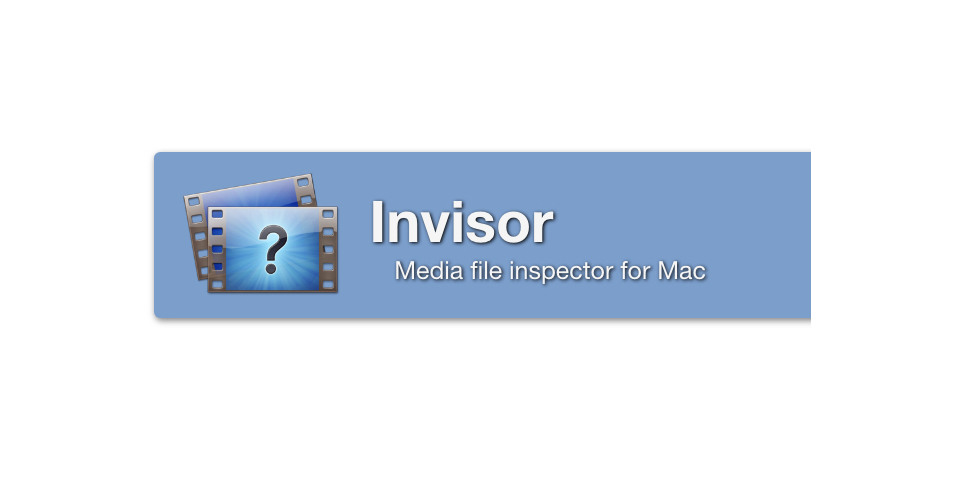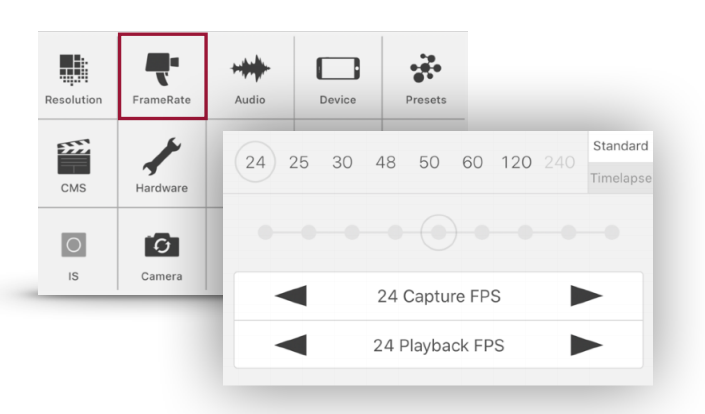I have written a fair amount about about the differences about VFR (variable framerate) used with most Android, iOS and iPadOS recording apps (and with streaming), versus CFR (constant framerate) in standard camcorders and TV studios. I have also written about how to conform VFR files to CFR properly in video editing apps. Today I am going to share a brief review about Invisor, the tool I currently use to evaluate video files to determine many technical details, including whether that video file was recorded as VFR or CFR. In all cases, Invisor shows the target framerate. In the case of VFR, Invisor shows the minimum and maximum framerate too. Ahead I’ll go into more detail about the Invisor paid version, the free version and a competitor which is multiplatform. I’ll also cover other uses of the term Invisor.

Refresher about about VFR versus CFR
As I have covered in several past articles, video recording in mobile phones and tablets is not the common CFR (constant framerate) found in camcorders and traditional TV studios, but VFR (variable framerate).

When we set a framerate in an app like the renowned FiLMiC Pro, for example: 24, 25 or 30 (see screenshot above), they are actually just targets and we should interpret the menu to be saying ≈24, ≈25 or ≈30. The recording actually varies continually (based upon the complexity or simplicity of a scene) both above and below the target to save bandwidth. The recorded material is later conformed to a desired framerate at CFR after manually setting a project in a compatible editor before adding the first clip to the timeline. Some examples of those final desired distribution framerates include:
- ≈23.976 (aka ≈23.98) which is actually a rounded number from the result of 24/1.001 (for television in ex-NTSC regions or for the web)
- 24 exact (for DCI film projection or for the web)
- 25 exact (for television broadcast in ex-PAL regions or for the web)
- ≈29.97 which is actually a rounded number from the result of 30/1.001 (for television broadcast in ex-NTSC regions or for the web)
- 30 exact (not standard since before 1953)
- 50 exact (not recommended for final delivery unless you are covering sports or video gaming) (for television broadcast in ex-PAL regions, especially for sports channels)
- ≈59.94 which is actually a rounded number from the result of 60/1.001 (not recommended for final delivery unless you are covering sports or video gaming) (for broadcast television in ex-NTSC regions)
- 60 exact (only for gaming, not for traditional on-air broadcast)
Some apps capable of this have us set the desired framerate via the user interface/UI (i.e. Adobe Premiere Pro CC, Apple Final Cut Pro) while creating a project manually, before dragging the first clip. With a capable app like iMovie for macOS but which no longer offers this setting in the UI, you can do it using a workaround as explained in this article. If you use a video editor that does not support VFR footage satisfactorily, you can always transcode to a CFR format first.
Use Invisor to determine whether suspicious footage is CFR or VFR
As an editor, you will sometimes receive footage from outside sources and not know whether it is CFR or VFR. Although you can often find out very basic information about a video file from the the QuickTime Player’s Inspector feature (press Command + I within the QuickTime Player app), Invisor for macOS is among the few software tools that will identify whether a video file is CFR or VFR. Invisor goes much further than that, since in the case of a VFR file, Invisor will actually the display the minimum and maximum frames per second, as well as its spatial resolution, bit rate, internal códec, color space, whether it’s progressive or interlaced and other value information.
To determine whether a particular video file is CFR or VFR, slide down in the Invisor report to the item called Frame rate mode: There it will either state Variable or Constant. In the case of Constant, below you’ll see the Frame rate (i.e. average), Minimum frame rate, Maximum frame rate and Frame count.
Included features:
- Export allows you to save gathered information in different formats: Text, HTML, CSV, XML, JSON.
- Comparison table can be exported to CSV or HTML document.
- Removing geolocation information from images and MPEG-4 video.
- Extracting cover and image previews.
The paid version currently costs US$3.99 from the US Apple AppStore for macOS (or a similar amount in your region). I paid full price from mine and have no commercial relationship with the developer as of publishing this review article.
Differences with Invisor Lite (free):
Invisor Lite is a free version of Invisor, has the same features as the full version but without export and comparison functionality. It’s available directly from the developer’s website at InvisorApp.com.
Other uses of the term invisor
The term invisor is very similar to the Castilian term inversor used in some countries like Chile, even though the official dictionary term is inversionista and it’s used in more countries in my experience. This similarity of the term may be the reason for the name of the Canadian company Invisor Financial Inc. and its website Invisor.ca, even though it’s not exactly the same as the French term inviseur either. II have no connection with this company.)
MediaInfo: a competitive, free multiplatform app
Thanks to information recently shared with me by Daniel Hernández Portugués (Lead Android Engineer / FiLMiC Inc.), I now know about the free multiplatform competitive app called MediaInfo. This app also gives similar information about CFR versus VFR and is available for:
- Android
- ArchLinux
- CentOS
- Debian
- Fedora
- Linux Mint
- macOS
- openSUSE
- Rasbian
- RedHat Enterprise Linux
- Ubuntu
- Windows
It’s available via the developer’s website which is multilingual.
Although I haven’t yet used MediaInfo personally, I’ll be covering and quoting fascinating information from MediaInfo via Daniel Hernández Portugués in an upcoming article. Be sure to be on my free mailing list to be notified.
(Re-)Subscribe for upcoming articles, reviews, radio shows, books and seminars/webinars
Stand by for upcoming articles, reviews, books and courses. Sign up to my free mailing list by clicking here. If you previously subscribed to my bulletins and no longer receive them, you must re-subscribe due to new compliance to GDPR. Most of my current books are at books.AllanTepper.com, and my personal website is AllanTepper.com. Also visit radio.AllanTepper.com.
Si deseas suscribirte (o volver a suscribirte) a mi lista en castellano, visita aquí. Si prefieres, puedes suscribirte a ambas listas (castellano e inglés).
Suscribe to my BeyondPodcasting show in English or CapicúaFM en castellano.
FTC disclosure
No manufacturer or developer is specifically paying Allan Tépper or TecnoTur LLC to write this article or the mentioned books. Some of the other manufacturers listed above have contracted Tépper and/or TecnoTur LLC to carry out consulting and/or translations/localizations/transcreations. Many of the manufacturers listed above have sent Allan Tépper review units. So far, none of the manufacturers listed above is/are sponsors of the TecnoTur , BeyondPodcasting CapicúaFM or TuSaludSecreta programs, although they are welcome to do so, and some are, may be (or may have been) sponsors of ProVideo Coalition magazine. Some links to third parties listed in this article and/or on this web page may indirectly benefit TecnoTur LLC via affiliate programs. Allan Tépper’s opinions are his own. Allan Tépper is not liable for misuse or misunderstanding of information he shares.
Copyright and use of this article
The articles contained in the TecnoTur channel in ProVideo Coalition magazine are copyright Allan Tépper/TecnoTur LLC, except where otherwise attributed. Unauthorized use is prohibited without prior approval, except for short quotes which link back to this page, which are encouraged!

Filmtools
Filmmakers go-to destination for pre-production, production & post production equipment!
Shop Now











